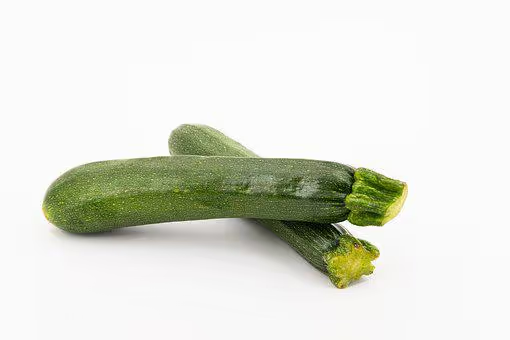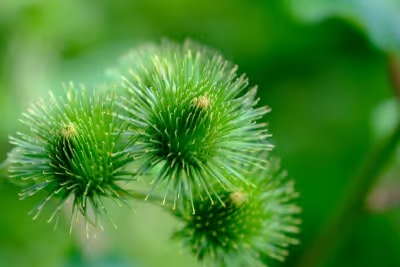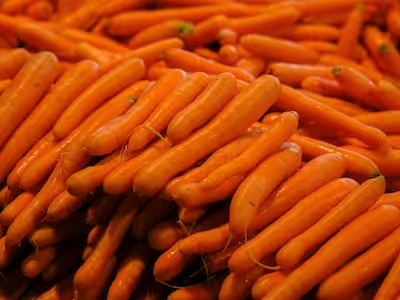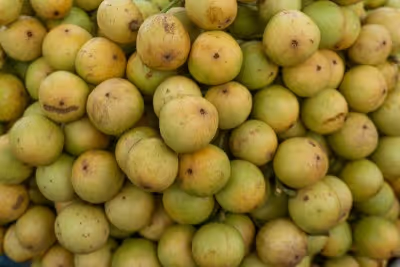Growing Red Clover Made Easy: Essential Tips for Success
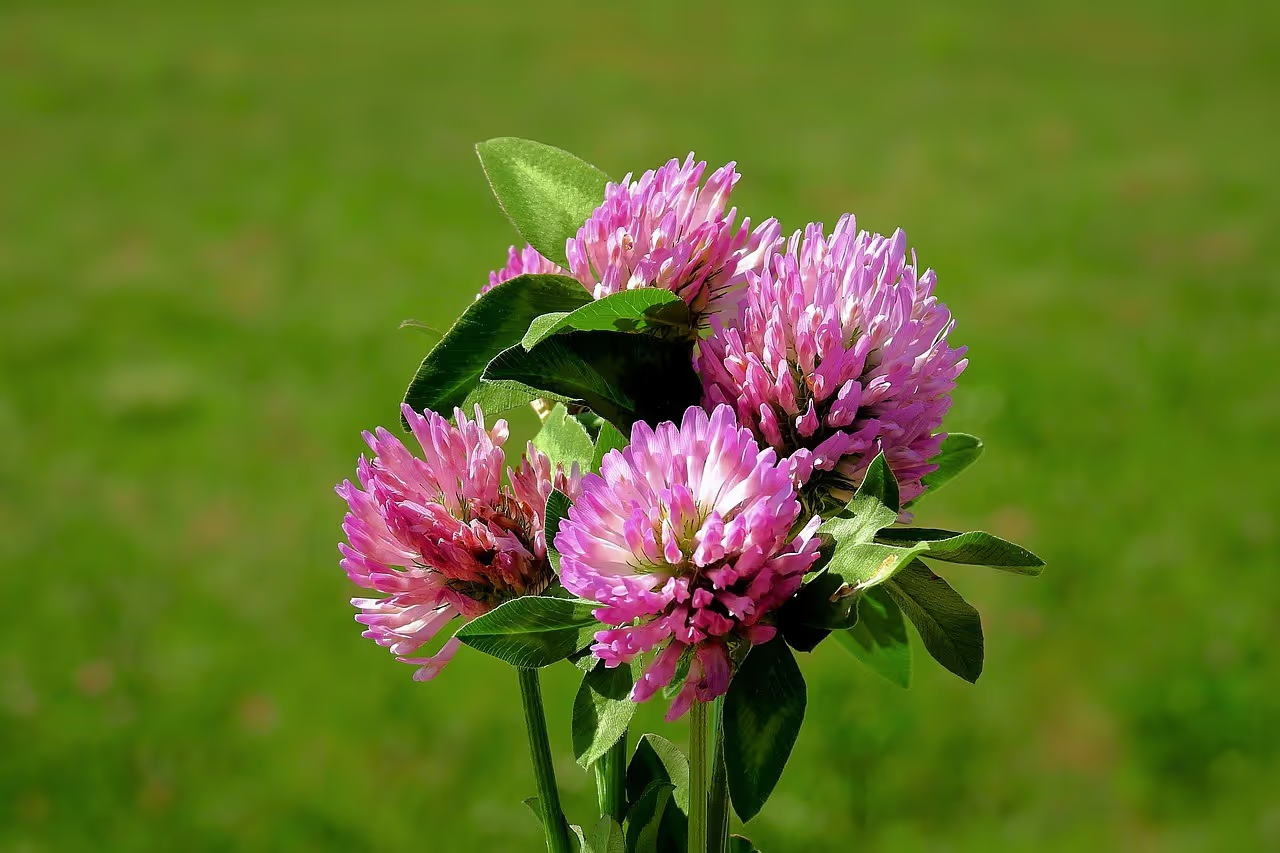
Growing Red Clover
Growing red clover enriches your soil, attracts pollinators, and adds vibrant cover to garden beds. Sow seeds in early spring or late summer, lightly rake them into loosened earth, and water regularly until sprouts emerge. For gardeners craving lush soil fertility and a natural bee haven, red clover delivers generously—keep reading for easy ways to thrive with this versatile plant.
Cheatsheet: Red Clover Growing for Abundant Yields
🌱 Site & Soil Selection
Full sun yields dense growth. Prefer light, well-drained, pH 6-7 soil. Avoid wet or heavy clay.
🛠️ Tools and Products You'll Need
- Rake or hoe for seed bed prep
- Sprinkler or hose
- Certified red clover seed
- Inoculant (optional for low-nitrogen soil)
- Compost (for poor soil)
🌾 Sowing & Spacing
- Sow early spring or late summer
- Broadcast 8-10 lb/acre (9-11 kg/ha)
- Cover seeds 1/4 inch (0.6 cm) deep
- Thin to 6 in (15 cm) apart
💧 Water & Feed
- Keep moist until established
- Rarely irrigate once mature
- No fertilizer needed if soil is rich
🧑🌾 Maintenance
- Mow after flowering to encourage regrowth
- Remove weeds early
- Avoid heavy foot traffic
🍃 Harvest & Uses
- First harvest: 60-70 days after sowing
- Cut for mulch, green manure, hay, or tea
- Fixes up to 100 lb/acre (112 kg/ha) nitrogen
- Edible flowers, vitamin-rich
🔬 Health & Self-Sufficiency
- High in protein, calcium, isoflavones
- Improves soil fertility & pollinator habitat
- Used in teas for natural wellness
🧭 Steps for Success
- Prepare weed-free bed with loose soil
- Broadcast seed evenly & rake in lightly
- Water gently until seedlings emerge
- Thin as needed for airflow
- Mow after flowering to prolong stand
- Harvest tops for culinary or medicinal use
-
Growing Red Clover Made Easy: Essential Tips for Success
I sow red clover when I want a bed to work while I sleep, then wake to pollinators and free nitrogen. It stitches soil structure, feeds microbes, and turns tired rows into spring-loaded launch pads for heavy feeders.
Site, soil, and the quiet science behind the magic
Growing Red Clover thrives in full sun and tolerates light shade under orchard canopies. Aim for a soil pH of 6.0 to 7.0, with decent drainage and steady moisture during establishment.
Scratch in a soil test if you can, then correct P and K before sowing since clover supplies its own N but still needs the rest of the pantry. I’ve seen it limp in compacted clay, then rebound after a single season of roots and mowing.
"Red clover can supply roughly 70 to 150 lb of nitrogen per acre in one season." Source: SARE, Managing Cover Crops Profitably, 3rd ed.
Rhizobium leguminosarum bv. trifolii does the heavy lifting. Inoculate the seed if this is your first clover in that soil or if past stands were weak.
Timing: plant windows that actually work
Frost-seed late winter as freeze–thaw opens tiny cracks, or drill early spring once soils are workable. In hotter regions, late summer sowing 6 to 8 weeks before frost sets excellent roots for winter.
Germination hums along near 59 to 68 F, 15 to 20 C. I’ve frost-seeded into thinning winter rye in February and watched bumblebees throw a party in June.
Seed rate and depth that hit the sweet spot
Seed shallow: 0.25 inch deep, 6 mm, and firm the seedbed so it feels like a good firm sponge underfoot. Drilled rate 8 to 10 lb per acre, 9 to 11 kg per hectare, or 3 to 5 oz per 1000 sq ft if broadcasting.
In mixes, cut the clover rate in half. Coated seed needs a slightly higher rate since part of the weight is coating, not embryos.
Sowing, step by step
- Rake a clean, fine surface or mow tight if overseeding into stubble or turf.
- Blend seed with slightly damp compost for easy hand broadcasting or use a hand-crank spreader.
- Roll or lightly tamp to ensure seed-to-soil contact. Skip heavy covers that bury seed too deep.
- Water gently for the first two weeks if skies fail you, about 1 inch per week, 25 mm.
Inoculant, coatings, and quick microbiology
Use a clover-group inoculant and keep it cool and fresh. If you buy pre-inoculated or coated seed, plant within the printed window and store it out of heat.
Nodules should blush pink inside by week 4 to 6 if you slice one open with a knife. That rosy tint signals active nitrogen fixation.
Mow, graze, and manage like a pro
Let the first flush reach early bloom, then mow at 4 to 6 inches, 10 to 15 cm. Repeat every 4 to 6 weeks to push roots and suppress weeds.
Terminate 2 to 3 weeks before planting the next crop. I often mow, irrigate, then tarp for rapid breakdown, or till once and let it mellow.
"Dry matter yields can hit 2 to 4 tons per acre in good years." Sources: USDA NRCS Plant Guides and university extension trials.
For grazing, avoid wet soils and watch for bloat in hungry ruminants. Mix with grasses or provide dry hay to buffer.
Where red clover fits in the rotation
Follow with nitrogen-hungry crops like brassicas, corn, or squash. I prefer tomatoes after clover for thick stems and dark leaves without extra urea.
As a living mulch, undersow into sweet corn at last cultivation or beneath late brassicas. Keep the canopy pruned so it does not smother young seedlings.
Weeds, allelopathy, and herbicide carryover
Red clover wins by shade and persistence, not chemical warfare. It smothers annual weeds well if you seed thick and mow on time.
Watch herbicide carryover from prior crops, especially ALS inhibitors and triazines. When in doubt, do a jar test or plant a small patch first.
Water and fertility: steady beats flashy
Once established, it tolerates short dry spells thanks to a deep taproot. In sandy beds, a weekly inch of water keeps biomass humming.
Skip nitrogen fertilizers. If growth looks pale, check nodulation or add a light shot of sulfur, boron, and a balanced P and K per your soil test.
Pollinators and backyard ecology
Red clover flowers feed long-tongued bumblebees like a good espresso bar. Honey bees join when florets wilt slightly and nectar gets shallow.
I interplant a strip along squash and cucumbers to keep native bees cruising the block. The whole bed runs smoother with that traffic.
Variety short list: pick for your goal
- Medium red: 2-cut type with stout regrowth, good for grazing and repeated mowing.
- Mammoth red: one big early cut, tall biomass for quick green manure, slower regrowth.
- Improved disease-resistant lines like ‘Freedom!’, ‘Kenland’, ‘Starfire II’: better stand life and crown rot tolerance.
In cold zones, choose varieties rated hardy to your winters. In humid summers, disease resistance pays off by August.
Buying guide: what I actually pay for
- Seed form: raw for lower cost and precise rates, coated for convenience and better flow through spreaders.
- Certification: organic seed for certified farms, or untreated conventional for home plots.
- Inoculant: fresh packet matched to clovers, not peas or vetch.
- Tools: a hand-crank spreader, lawn roller, or a piece of plywood and boots to firm the seedbed.
Typical pricing runs affordable by the pound, with coated seed priced higher. I buy small lots yearly rather than hoard and lose viability.
Frost seeding that actually takes
Broadcast in late winter on bare or short grass while the ground still heaves each morning. Tiny seeds ride those cracks down to perfect depth.
I toss seed over melting snow on a quiet morning, then step it in with boots. Spring turns those specks into a red-and-green carpet.
Termination methods, from gentle to absolute
- Mow and tarp for 10 to 14 days, then plant transplants into residue.
- Flail mow, then shallow till 4 inches, 10 cm, and wait two weeks before direct seeding the next crop.
- Winterkill rarely finishes it, so plan a mechanical step in spring.
Roller-crimpers shine with cereals, not clovers. I treat clover with a mow-first approach to keep it simple.
Common problems and quick fixes
- Yellow plants: check nodules, add inoculant next time, and ensure soil P and K are adequate.
- Thin stand: reseed bare patches early, and confirm depth stayed at 0.25 inch.
- Aphids: mow early, encourage lacewings and lady beetles, and keep nitrogen fertilizers out.
- Winter heave: roll lightly in spring to reset crowns and reseed gaps.
Lawns, orchards, and side gigs
Red clover in lawns grows tall and can look scruffy, so I prefer it along borders or under fruit trees. For tidy turf, use micro white clover instead.
Under apples and pears, it catches dropped nutrients and feeds soil life. Keep a 12 inch, 30 cm, trunk-free ring for airflow and pest monitoring.
Edible blooms and safety
Blossoms are edible fresh or dried for tea, mildly sweet with a hay note. Avoid fermented or moldy clover hay because coumarin conversion can create blood-thinning compounds.
If you take blood thinners or have hormone-sensitive conditions, go easy on medicinal use due to isoflavones. For garden use and soil building, it stays a smart, low-risk ally.
Numbers that shape real-world decisions
Expect 45 to 60 days from sowing to first light cut in spring. Full-season stands can fix the nitrogen equivalent of a bag and a half of urea per acre without the burn.
Rooting reaches 12 to 24 inches, 30 to 60 cm, in friable soil, which lifts compaction and boosts infiltration. I’ve watched puddle-prone beds start drinking again by midsummer.
FAQ for fast choices
- USDA zones: perennial in many temperate zones, short-lived in heat, reseeds if allowed to flower.
- Shade: tolerates light shade, struggles under dense canopy.
- Mix partners: rye, oats, and timothy for hay; cereal rye or oats for cover cropping; buckwheat for quick early flowers.
- Afterlife: chop-and-drop around tomatoes and peppers or compost the clippings for a nitrogen-rich kick.
Why I keep coming back to it
Red clover behaves like an honest coworker who shows up early and leaves the shop cleaner than they found it. Plant it right, give it a couple trims, then let the soil and bees pay you back.
Sources I trust
- SARE, Managing Cover Crops Profitably, 3rd ed.
- USDA NRCS Plant Guides on Trifolium pratense.
- University Extension bulletins from Wisconsin, Penn State, and Oregon State on seeding rates and management.
Frequently Asked Questions on Growing Red Clover
What Soil Conditions Help Red Clover Thrive?
Red clover sings loudest in well-drained, loamy soils with a slightly acidic to neutral pH (around 6.0–7.0). It tolerates poorer, compacted conditions, but loosen heavy earth to give roots breathing space and improve drainage. Organic matter is your ally—compost or aged manure brings the biology alive, giving clover roots a thriving underground banquet.
How Much Sunlight Does Red Clover Actually Need?
Growing red clover demands sunlight—at least 4–6 hours daily to truly flourish. Partial shade is tolerable, but direct sunlight wakes up the plant, igniting vibrant blossoms and lush growth. Position it in open spaces, where the sun gently kisses foliage and flowers all day long.
What's the Best Way to Sow Red Clover Seeds?
Sow seeds directly into loosened soil, lightly raked, at about a quarter-inch deep. Scatter seeds evenly, then gently firm the soil to make solid contact. Keep the planting area moist—not drenched—until sprouts break through, typically within 5–10 days. Mediocrity is your enemy; sow generously to ensure full, lively coverage.
How Often Should Red Clover Be Watered?
Red clover prefers consistency—keep the soil moderately moist but avoid turning it into soggy mush. Once established, regular rainfall typically meets its hydration needs. In dry spells, assist nature with weekly watering sessions, always allowing the topsoil to dry slightly between drinks to preserve healthy root growth.
Can Red Clover Coexist With Other Plants?
Indeed, red clover plays well with others. Its nitrogen-fixing magic enriches the soil, nourishing neighboring plants. Pair it confidently alongside grasses, wildflowers, and even garden vegetables. Avoid overly aggressive companions that could overshadow it; find partners that appreciate the symbiotic rhythm red clover dances to.
When and How Should I Harvest or Mow Red Clover?
Harvest or mow red clover just as blooms reach their peak, before seeds fully develop. Clipping at this moment encourages lush regrowth and prolongs its beneficial habitat for bees and pollinators. If you're harvesting for tea or herbal remedies, gently collect flower heads on a dry morning when aromas and potency peak.
Does Red Clover Attract Pollinators?
Absolutely—red clover is like a beacon for pollinators. Bees are particularly drawn to its nectar-rich blossoms, buzzing happily among the vibrant flowers. Planting red clover enriches your garden's biodiversity, transforming it into an irresistible hub for beneficial insects.
Growing Red Clover rewards you with more than just vibrant blooms—it’s a living boost for your soil, a magnet for pollinators, and a reliable cover crop. Keep things simple: sow seeds in early spring or fall, favor well-drained soil, and don’t overthink watering. Let clover do its work—fix nitrogen, crowd out weeds, and fill your patch with color and life. Mow before flowering if you want to keep it low, or let it go wild for the bees. Remember, a healthy patch of red clover can play well with crops like turnip or celery, boosting your rotation and your soil. Sometimes, the simplest plants do the most heavy lifting. Give red clover a spot, and watch your whole garden breathe easier.
The Homesteader's Take: Red Clover for Self-Reliant Living
Natural Soil Fertility
Red clover fixes nitrogen at around 75-150 pounds per acre (84-168 kg/ha), reducing costly fertilizer inputs and improving soil structure for healthier future crops.
Nutritious Livestock Feed
- Offers abundant forage containing around 15-20% crude protein, improving animal health and milk quality.
- Reduces expenses on supplemental feeds, increasing farm profitability.
Medicinal and Nutritional Uses
- Dried red clover blossoms make nutritious tea rich in vitamins C and B-complex, calcium, and magnesium.
- Traditional herbal remedies utilize blossoms to promote respiratory comfort and overall immune support.
Pollinator Promotion
The vibrant clover blossoms attract beneficial pollinators, boosting yields of companion crops and supporting ecological biodiversity.
Cover Crop and Weed Suppression
Dense clover plantings effectively suppress unwanted weeds, significantly minimizing manual labor and herbicide dependency.
Seed Saving for Sustainability
- Easily harvested after blooms dry; collect seeds for sustainable replanting, ensuring yearly independence from commercial seed sources.
- Store dried seeds in airtight jars at a cool, dark location for up to three years.
Find out which plants will thrive in your garden!
Answer a few fun questions and get custom plant recommendations perfect for your space. Let’s grow something amazing together!

start your season
